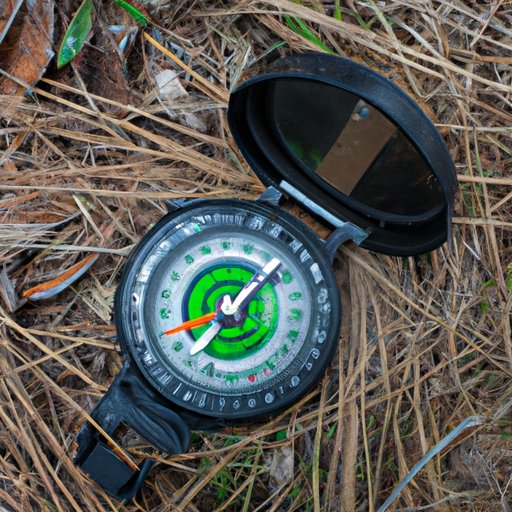Introduction
If you love to hike or camp, you know that getting lost is one of the worst things that can happen. Fortunately, being skilled in navigation doesn’t always require fancy gadgets or modern technology. One tool that every outdoor enthusiast should know how to use is the compass. Whether it’s just a day hike or an overnight camping trip, knowing how to use a compass can be a lifesaver. This article aims to provide you with all the essential information you need to understand and use a compass effectively.
How a Compass Works
Before you learn how to use a compass, it is essential to know how it works. A compass is an instrument that helps you find your way using the Earth’s magnetic field, which points the needle on the compass toward magnetic north. The compass consists of a magnetized needle that is free to pivot and aligns itself with Earth’s magnetic field. By knowing which way the magnetic north is, you can use a compass to determine your direction accurately.
To use a compass, hold it flat in your palm and ensure that it is level. Then, rotate your body until the end of the needle pointing to North. Once you have determined which way is north, you will know the other cardinal directions (east, west, and south).
How to Read a Compass
Reading a compass can seem daunting, but it’s quite simple. The face of a compass is divided into four cardinal points: north, south, east, and west. These points are further divided into thirty degrees segments; a full circle equals three hundred sixty degrees. To use the compass, you need to hold it in front of you and find the direction you want to go. Look at the needle and rotate your body until the red end of the needle matches the north mark on the compass face. The direction you want to go is now in front of you, indicated by the corresponding markers on the compass face.
Orienting a Map with a Compass
Orienting a map with a compass is an essential skill that hikers and campers need to know. Without proper orientation, you could end up taking the wrong trail or heading in the wrong direction, which could lead to discomfort and danger. To begin, lay your map down on a flat surface and put the compass on top of it. Then, rotate the map until the magnetic north arrow on the map is lined up with the north mark on the compass. Next, turn the compass housing until the red end of the needle is pointed to the north mark on the compass. Once aligned, the map will be oriented to the cardinal points of a compass.
Understanding Declination
Understanding declination is essential before heading outdoors. Declination is the difference between true north (the direction of the North Pole) and magnetic north (the direction that a compass needle points). The difference between true north and magnetic north is different depending on your location, and it also changes over time. Not accounting for and understanding declination can result in getting lost or incorrectly orienting a map.
To know the declination in your area, you can check online or on a topographic map. It’s an excellent practice to prepare for outdoor activities by learning about the declination so that you can adjust your compass readings accordingly.
Navigating with a Compass
Once you have learned how to use a compass, you can begin navigating in different terrains, such as woods or the desert. Basic navigation skills are simple to learn, but the more advanced skills require more practice and experience. Begin by taking small steps and practicing navigation in a familiar area.
One essential skill to learn is the ability to take a bearing. Taking a bearing is determining the direction of your destination. To take a bearing, hold the compass flat, and point the direction of travel arrow at your destination. Rotate the dial until the red end of the needle lines up with the north marking. Your bearing is now determined by reading the compass’ housing’s degree markings.
Types of Compasses
It’s essential to know that there are different types of compasses designed for specific needs. For instance, a baseplate compass is popular because of its simplicity and ease of use. On the other hand, lensatic compasses are designed for more advanced users who deal with more complicated terrain. Also, electronic compasses are widely used to provide accurate and fast data readings. They allow hikers and campers to take a bearing even when they are not level or have poor visibility.
Common Errors to Avoid and What to Do When Lost
Mistakes while using a compass are common, but learning how to avoid these errors can make them less severe. One common error is not being level when taking a bearing, making the result unstable and unreliable. Another mistake is not accounting for declination, which can result in taking the scenic route instead of your intended destination. When lost, it’s essential to stop and remain calm. Look at your map and retrace your steps. If you are still lost, look for natural landmarks such as a river, mountain, or any other significant geographical features that can help you identify your location.
Conclusion
Knowing how to navigate using a compass is an essential skill for hikers and campers. With some basic knowledge and practice, you can quickly become skilled in using a compass. By mastering the necessary skills, you can avoid danger, take the right trail, and reach your intended destination.
